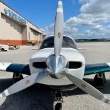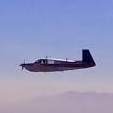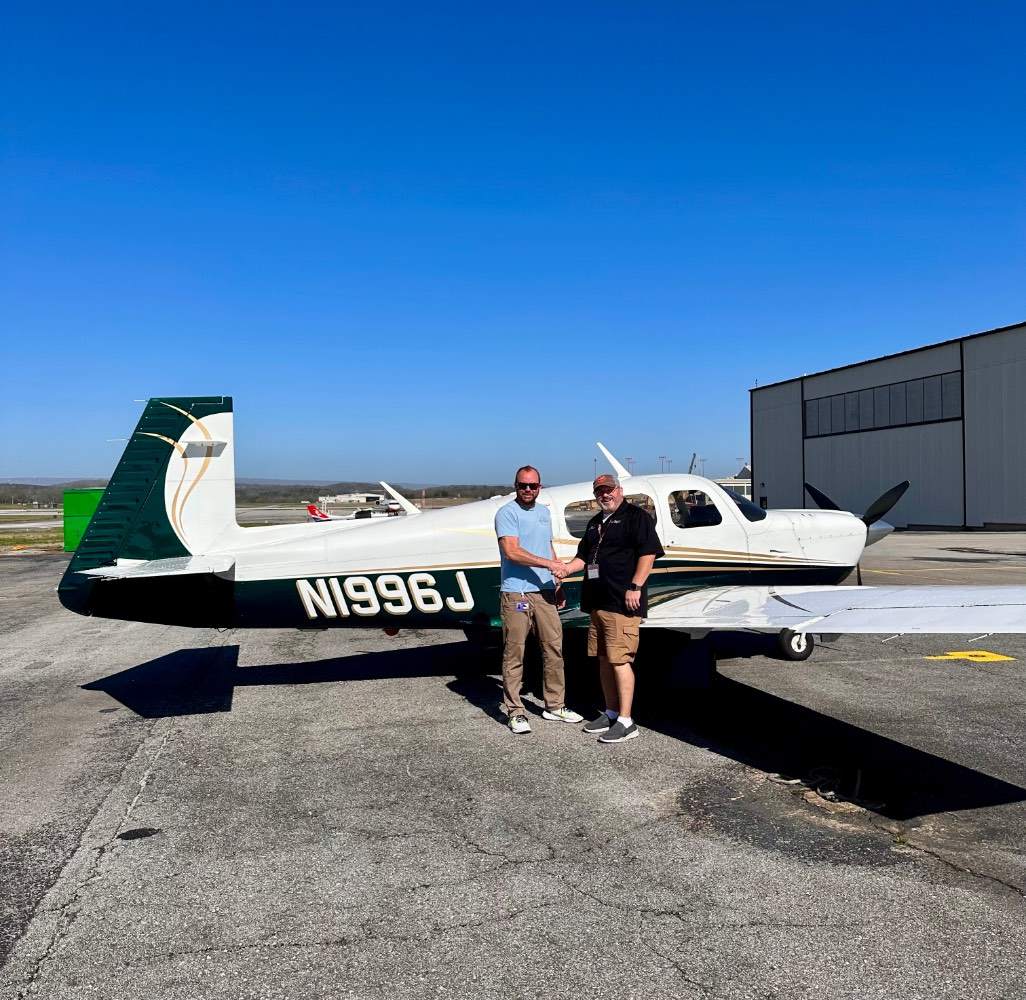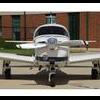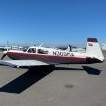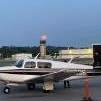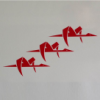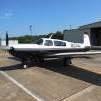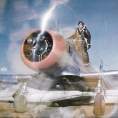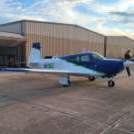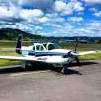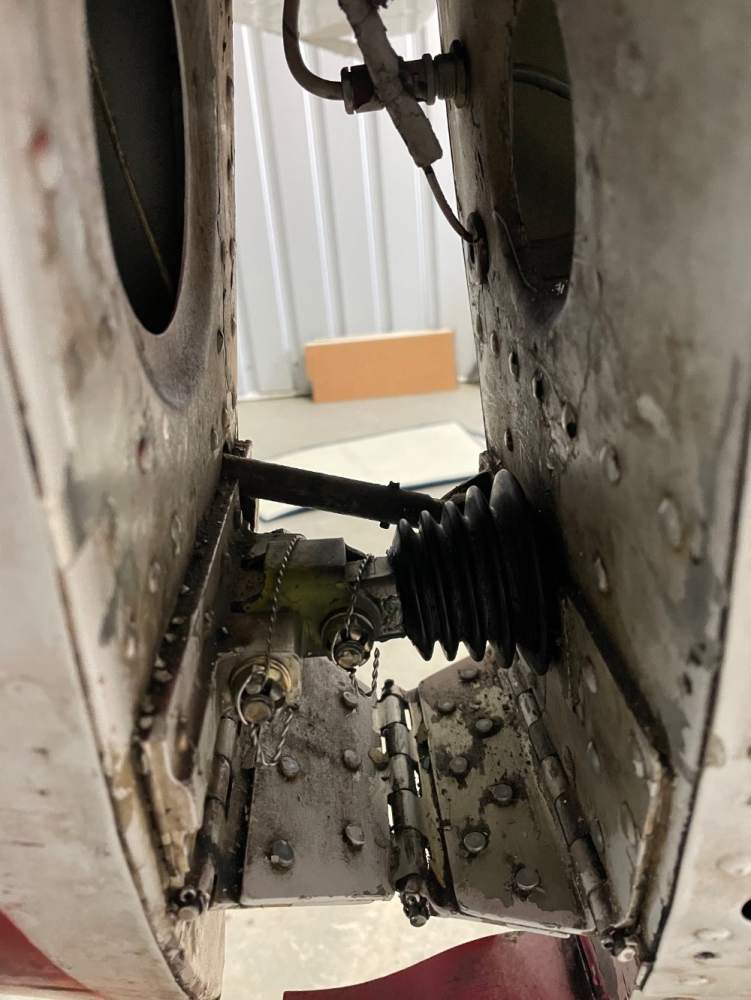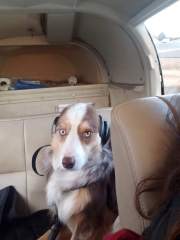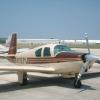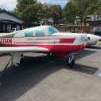Leaderboard
Popular Content
Showing content with the highest reputation on 03/17/2023 in all areas
-
Well I’m a couple weeks late in sharing, but completed my first ever solo and excited that it was in my M20J! Sure beats the 152s I started my training in. And man does she just jump off the runway without my meatball CFI tagging along Been a long time coming with relearning everything after switching to the Mooney, mag rebuild and SureFly install, winter weather, etc etc. Have done a few solos and dual XCs since, with XC solo slated for next week.13 points
-
don't think anyone can be mad at 25 years of support.4 points
-
Smart glide has been available on selected Garmin GPSs for some time. I really hadn't gone out and practiced with it, though. I did yesterday. If you have it and think that in an emergency you can easily push the button to enable it and your worries are over, you have another thing coming. Without extensively studying the manual, going out and practicing, and then coming back to really re-read the manual, the whole process can be overwhelming. A lot of data shows up on the screen or screens and where to look requires practice and studying the manual. Someone once asked, "Why would you need both the 750 and 650"? I can say that at least one of the reasons is Smart Glide. The 750 provides the map and the 650 the Emergency Page all at once. The main reason for this post, though, is a test I did. I activated Smart Glide and waited for it to compute where it wanted to go. The GFC 500 engaged and the plane turned towards the chosen airport. During this time the pitch changed in the process of going towards best glide speed. Remember to remove power to idle! If you don't, the plane will pitch up and climb in an effort to get to best glide. Once established at best glide speed and stable, I looked at the projected arrival altitude over the airport. I did this with the prop in. If you want to become a believer in why it is so important the pull the prop control all the way out is such a situation, all you have to do is perform the test I did. When I pulled the prop control out and waited a couple of seconds, the arrival altitude over the airport increased by 450 feet. Of course, the higher you start out the better it will be. Remember to pull the prop control in an emergency.3 points
-
They did the F and decided it was the best Mooney and no point in reviewing the others.3 points
-
I agree with the opinion about the purchase price being irrelevant to a point. An airplane is a discretionary purchase, and it typically makes little to no financial sense whatsoever. But… Isn’t that what we work for? To buy things for our pleasure and enjoyment? At the rate planes are being damaged they get more scarce everyday. Historically they (single engine pistons)are not assets that depreciate, and this isn’t conjecture or opinion. Even at adjusted dollar value, most are selling for more that they did when new. They are more like large boats in that they cost more to own and operate than to purchase, and as long as you can survive a downturn and keep the plane maintained, your chances of losing money on the sale price, compared to purchase is slim. I like to get deals as much as anyone, but at some point I want what I want. I have a real good friend who is a lifelong bachelor and was a firefighter in New York. He lived in this tiny co-op in New York and I made him a piece of furniture for a gift one year. When I visited him to deliver it I noticed how tired and run down his little kitchen was. I asked him if he wanted to let me help renovate it for him. He thought about it for a minute and said “nahh, I only have 12-14 years left here”. I love to tell this story to clients because, in retrospect, what it taught me is that quality of life means different things to different people. I look, I shop, I research, I understand what prices are doing and when I see the one I want I buy it. I try not to overpay, and I don’t get overly hung up on getting the best price ever. Having it to enjoy is what that delta is worth. To each their own.3 points
-
I am amused by people looking or a "deal". Yes we all would love a bargain basement price on something that's worth much more than we paid for it - but that mainly happens on TV shows. About the only exception is that you personally know of someone who hasn't put it on the market and buy it directly from them at less than you think it's worth. If an airplane is underpriced and it hits the market it will sell in the first couple days and it's unlikely you'll ever see it or get there soon enough. If it is overpriced it will languish on the market. Neither the seller or the buyer determines the price, the market does. The best "deal" is a Mooney that has been very well maintained by people who know Mooneys and has had a caring owner. There are some rough ones out there. When a good one hits the market, which will probably prove to be the least expensive in the long run since it's been maintained well, be prepared to pay the price and not look back. The money it costs to bring something back from the ash heap is a lot more than buying a seemingly "over-priced" nice one.3 points
-
You may benefit from having the system purged. https://www.cav-systems.com/product/tks-fluid-test-cart/ There used to be a big list of installation centers on their website, but now it shows only JA Aircenter in Il and Lincoln Park in NJ. Any installation center, and maybe any big cirrus shop, should have the purge equipment. It's good news that your w/s pump is working. those are prone to seizing and not cheap. -dan3 points
-
I was worried about that, so I discussed it with my installer beforehand. I suggested he run the trim all the way to the down limit before disconnecting and then just not rotate the jack screw while it was disconnected though he could rotate the rest of the trim system as much as necessary for the installation making sure to run it all the way down again before reconnecting to the jack screw. He said that worked great and my trim was fine after the installation.3 points
-
I think supply and demand have a lot to do with prices as well. They're not making any new airplanes that the average guy can afford and the supply of affordable older planes is shrinking daily. Think about how many get wrote off due to crashes and corrosion issues. Are planes currently overpriced, I believe so but it's whatever the market will bear and that's the truth in selling anything. I believe it'll take a huge crash for prices to drop 30-40%. I think 15-20% may be possible in the next few years. I'm thinking about upgrading from my Cherokee and when I get serious about it I'll pony up and pay wherever I'm comfortable with. Don't forget a dollar is worth more or less to different people and there's lots of people with lots of dollars.2 points
-
Pump is on its way back! All things considered, pretty quick turn around. Should have it early next week. -Don2 points
-
2 points
-
2 points
-
Just my opinion, but I would let someone do this that's done it many times. I know my personality and for years it was "shoot first, ask questions later". My tendency would be to go at that too aggressively since I want it gone and I would end up creating some other problems. I'll do the basics and I enjoy learning, but I've also found that if I let the experts do what they do best, I can go make what they charge doing what I do best and it gets done right. Also with this much surface corrosion you're not going to be satisfied until the airplane looks like you want it to look. If circumstances allow I'd at least get on the waiting list at a paint shop with a good reputation. You have a great platform to work with there and since you plan on turning it into your forever plane it will be worth it.2 points
-
2 points
-
When you say "evaluation", is this the kind of thing you are looking for? M20F Eval (MAPA).pdf2 points
-
You will find that your urologist advises the same procedure - catch your sample “midstream”….also known as the “clean catch method”. Age has its benefits…2 points
-
1 point
-
@Schllc That was a damn fine post! In hindsight I wish I had purchased sooner than I did. I wasn’t hung up on getting “a good deal” price wise, as much as making sure I didn’t buy a wreck…educating myself took way longer than it should have.1 point
-
Good points, Don. I haven't experimented with it a lot, but I did notice a few things. 1. I think the best way to use it is to push the button at the first sign of unexpected engine failure and let the autopilot fly the airplane while going through emergency procedures. 2. If you pull the engine back to idle at cruise in a M20J, you will end up solidly in the yellow arc on the tach as it slows to best glide speed which is a great reminder to pull the prop back. 3. Smart Glide uses whatever best glide speed was programmed into it during installation. Most commonly the speed is set for max gross weight. The glide ratio doesn't change with weight, but the best glide speed does. So, if you are at a different weight than the speed set in Smart Glide, you should adjust the speed with the IAS thumbwheel on the GFC 500 to get maximum range. 4. With a G3X, the emergency page is available on the PFD as well as on the GTN. However, the Smart Glide range ring is only available on the GTN. The Smart Glide range ring differs from the normal glide range ring in that Smart Glide updates the range ring based on current measured glide performance. Currently, this is not available on the G3X and the G3X removes the glide range ring on it's map during Smart Glide. EDIT 5. Unless you are pretty high, and/or in an area with a lot of airports, there will not be an airport within glide range, so the best it can do is fly straight and level at best glide speed -- you're still going to have to turn it off and find a place to set down after you run your checklists. 6. This is definitely something you want to practice until the flow becomes second nature. There is a lot going on and you don't want to experience it the first time during an actual emergency. Skip1 point
-
Sure. It will be a couple of weeks because I am away from home base.1 point
-
when you install the sockets into the cowl, apply primer to the back of the sockets and to the seat in the cowl to prevent corrosion. Stainless should never rest against bare aluminum.1 point
-
This^^^^^^^^^^ You can purge it yourself with about 200 dollars in parts. It is just a pressure pot and filter with gauges and the appropriate tubing and fittings. Alternatively if you are in or close to the ATL metro, you could borrow mine. I would be happy to lend it to you.1 point
-
1 point
-
1 point
-
I meant I had no experience with a full rudder deflection slip in clouds .1 point
-
Yes, mine works fine without an antenna as well. There is a selection in the configuration menu that turns the internal gps on/off. Mine is connected to my 430w and doesn’t have an external antenna, so it’s supposed to be off, however… the g5 will accept the best gps solution it has available. I want to say @PT20J asked garmin about this, but I thought they can also use pitot input to help them stay aligned if gps goes out?1 point
-
The receiver in my stratux will do GPS or GLONASS, so unless they're both down I'm covered. If they're both down there'll probably be other things to worry about, too.1 point
-
I don’t think it would be hard to fabricate it, this is in the tail, back about 2 feet or so from the battery.1 point
-
The G5 has a pretty good GPS receiver built into it, so even if you lose your GPS navigator, it has a chance to work on its own. This also allows it to be installed without an external GPS source. There's a connector on the back for an external passive GPS antenna, but it also has an internal antenna. Mine will acquire satellites on its own without an external antenna. So it's possible that yours was using gps without your knowledge. There is a way on the maintenance/configuration pages to see how many satellites it's tracking.1 point
-
Most of them seem to wind up in the wing. I'm not sure why the battery would be an issue.1 point
-
1 point
-
All good discussion and good lessons and reminders. One thing for sure is that there are at least three sides to every story: what one person says happened, what the other person says happened and what really happened.1 point
-
I think you're knocking on a solution with your last sentence. I've been told I'll get vectors to final and requested an IAF a few times and they tend to not mind as it reduces their workload with you to some extent as then your course and altitude is defined on the chart and they don't have to get you headed the right way and altitude. I've also been forgotten about by approach controllers if I'm going to a smaller airport and they have a large C/B in their sector. So I end up having to prod them for things like " Approach 1QE would like to start our decent now" or start a turn now and I'd say about 80% of the time they give it to me and the rest they let me in on their grand plan with " standby traffic ...." type reply . If you're going to make the call to talk to them I'd find the number for the ABC Approach as you mention and list the date and time to the manager and they will go pull the tapes and get back to you with a reason or an apology, or maybe a "you missed a call clearly on the tapes here"1 point
-
If you use anything but the cling (removable) tint or shades (https://justplanetint.com/collections/aircraft-kits), you risk that a mechanic down the road will not sign off. I had that happen in 2007 in an annual-gone-bad and ended up having to remove the auto-type tint to get the annual signed off. I paid to have it installed 6 months prior and I paid to have it removed. Airplane tuition is expensive education sometimes.1 point
-
Just a couple of observations- If you bought a new car today at say $80,000 and calculated your maintenance costs at the factory store AND your depreciation for say 5 years out, add in your cost of gas for 15000 miles a year and your insurance What would your annual expenditure be? How close to your annual airplane cost are you? I bought my D model 25 years ago, I figured that my "investment" was closer to buying a new car than an "investment grade security". My plan has always been to treat this "investment " just like a new car. Once I'm done with it it has depreciated to zero value, any extra value I receive at the end is a bonus. I used it up and enjoyed the ride. No different than buying my 35 year old Rolls Royce. I bought a very good one and plan on using it up by the time I'm done with it. No thought of "investment grade acquisition" in it either. Just like my 60 year old airplane it will be a fine ride while it lasts but the end will come sometime. There is a coming time when our airplanes are going to be so old that resurrection will not be possible, saleable value will be nil and the scrap heap is where they will all wind up. How many well used 40-50 year old cars are out there now and how many where made? The view forward is the same- scrap yard eventually. Value = 0 Unless you are a professional trying to realize even a breakeven position at the end of your ownership is a fool's errand. Cars and airplanes? Both are fun but they are both a depreciating assets in the long run.1 point
-
How about capital punishment or life in prison without parole for government officials who embezzle or hurt the collective taxpayer through deception by greater than a certain dollar amount? Term limits? The idea of lifelong politicians making tens or hundreds of millions when they’ve never held a job besides government doesn’t pass my smell test or many others for that matter. I wonder if selfish interests contributed to the current situation…hmmmm Sent from my iPhone using Tapatalk1 point
-
At a minimum I think it all means that the GFC500 is sensitive to tolerances in the controls, either friction or slack or control force or whatever, it isn't particularly robust against typical variations in deployed systems. Usually control systems have a lot of margin for design tolerance, but given Garmin's difficulty with their servo design I suspect that it's part of the problem. King or Century or S-Tec or Brittain or whoever's autopilots don't seem to have the same issues with variations in Mooney controls. I used to think my 45-year old Century III (when it was working) was a problem because it had a very slight oscillation in roll sometimes, until I started noticing how other autopilots or installations behave. My Century was pretty solid in comparison. I wish it hadn't crapped out. :'(1 point
-
Two witnesses just adds credibility. I am grateful for the reposts. Since, generally speaking, no one restates exactly what was previously written, there are various nuances which can be helpful.1 point
-
1 point
-
Also due to false glide slopes that only appear above the real one.1 point
-
Hello Bob, I did receive your email and will respond to it as well, but figured I'd take this opportunity since you mentioned our conversation. we're not just sweeping this under the rug so to speak, we're going to investigate it more closely but as I mentioned and have discussed with a couple of Mooney owners, we're looking at a "J" or "K" model to re-evalaute. so if there are any of these models that are seeing these oscillations and would be willing to allow us to look at your plane, please send me a personal message and I'll be happy to get everyone needed in sync on this so we can try and get these problems resolved.1 point
-
I'm new here, and don't yet own a Mooney. I'm currently a Cessna 140 owner, and I didn't have corrosion to deal with, but I did strip out the entire interior that had been glued to the interior of my cabin and they glued the living crap out of it. Scotch brites did a great job getting me to aluminum, and specifically the ones I bought on Amazon for my Dremel... When I did the interior I went through 100s of them, they come in a bag of 50-100. They don't last long if there's any corner or object you're going around but do a bang up job fast without the sin of using a steel wheel... I'd highly suggest them vs doing it by hand with a scotch brite... They were a real time saver and did a great job. Then etch, Aldine and epoxy primer....1 point
-
As Shadrach mentioned, chances are that’s an original paint scheme with the added Swiss motif Candies (tinted clear coats) and pearls (tinted iridescent mica in powder or liquid form, formerly made for cash currency if you can believe that) are not applied on airplanes as often given that many times the “depth” look used to be achieved with multiple coats of intercoat clear or now “nebulizer” in a brand before the final coat of clear ….which has UV protection and also which adds weight. A typical gallon of paint is about 10 plus to 13/14 gallons, with single stage being around 4 gallons on average on a Mooney. On base coat / clear coat, the number goes up. Makes you want to polish if it was not so much work Certain brands of paint made a “candy base coat” (House of Kolor, Axalta’s Hot Hues) which is an emulated candy - brighter colors, but if not properly cleared with a high quality product, subject to color fading in the sunlight substantially over time. Thats achieved by mixing a ton of Candy concentrates and adding a lot of powdered pearl to the mix. I recently mixed 6 gallons of Red and blue for a friend in a candy Basecoat and each gallon retailed for $2800!!! Adding flake to the Matterhorn white (or pearl, or any other thing to make it look brilliant or unique) is awesome. That said, make sure you keep at least a half a gallon of inactivated paint for touch ups just in case- most shops use exactly the amount of paint needed with little left over as a function of cost and profit, and color matching a custom made color can be a bear - not to mention fading colors in the sun. We do use a lot of custom color tints in our shop because frankly much of aviation is boring…Matterhorn white, a couple of trim colors and goodbye. Ugh. Have some fun! What’s awesome (and challenging) about paint jobs like the “anomaly” mooney is the sheer number of colors you’d have to save…however, the plane is first coated with a base color (like Matterhorn white), and each color applied was high quality Montana spray paint, which is easily sourced followed by clear coat provided the painter kept a paint map much respect to the artist on that job Since I’ve owned my 252 for more than 20 years (Hi, Don Kaye - yea, it’s been that long ) I’m about to replace the recent factory paint scheme of ultras and acclaims with something more fun. We partner with a nice chap from Ferrari of Team Nemesis and relentless fame to do our paint schemes, and we’ll see what he comes up with for this project. Nothing as fun as anomaly but we will see1 point
-
Good grief! The fact that such a product even exists is further proof how screwed up our 'justice' system is1 point
-
1 point
-
IMHO this shows how irrational liability fears have corrupted a society. Or, if real, how perverted liability legislation has become.1 point
-
1 point
-
Me too!! It's time to upgrade my Brittain, for less than the value of my C!1 point
-
Constant AS climbs are really nice in small airplanes without auto throttles (when it works). You can just leave the throttle full and set a desired airspeed that is efficient, keeps chts cool, and doesn’t fall off below Vy with altitude. In fact, you really want constant AS climbs. It’s too bad it’s a little finicky with the gfc500. I fly a PA-46 with the gfc700 and IAS is really solid no matter how you set it or engage it. I use it both for climbs and descents. It seems like @PT20J has got it working somewhat reasonably.1 point
-
There is no such thing as “enough Mooney”. I have also owned two ovations. Nothing wrong with any of them. I just saw something I wanted more. Two of them were ultra’s. I liked the NXI, and the panel layout is awesome, but the two door feature is grossly over rated. The larger door is very nice, but two is just more places for air to leak. The best, and most missed feature of the NXI was the flight stream for flight plan input. The AC is nice, but after all my experience, not worth the hassle, weight and speed penalty, or loss of the hat rack. The fiki ones have been my favorite. High useful, even higher if you don’t have a need for tks fluid. Little speed penalty but worth the trade off. I was fortunate enough to have the opportunity to get in and out of them without losing any money, a few of them I made a little money. My understanding of my mission grew, then the mission changed. I landed on one with fiki. I don’t really want to be without this feature again. The Aerostar is almost ready though so the current one is for sale. But I do not seem to be happy without a Mooney so there will probably be another one if I don’t keep this one….1 point

